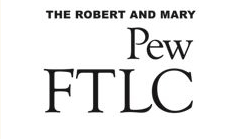Writing Courses and Outside Audiences: Creating Communities of Practice
Session Location
Eberhard Center 617 A
Session Start Date and Time
24-8-2011 1:15 PM
Session End Date and Time
24-8-2011 1:35 PM
Session Abstract
Incorporating real audiences in the classroom is key to help students engage in meaningful learning processes. Research has demonstrated that assignments requiring the consideration of audiences beyond the classroom greatly impact motivation and learning outcomes. In this presentation, I share strategies for building collaborative processes between course sections but also between the classroom and a wider campus audience. By doing so, I illustrate how cultural diversity can become a pedagogical means to build new communities of practice in and outside of the classroom.
Session Description
This presentation details the process underlying the implementation of an assignment requiring students to collaboratively compose instructional documents to ease the cultural transition of new international students at Grand Valley State University. The project involves two sections of WRT 200, Introduction to Professional Writing and the International Students Services. The purpose of this assignment is twofold. First, it constitutes a locus for engaging students and teachers in productive discussions about diversity, culture, and context. Second, it provides students with an opportunity to interrogate their own cultural identity and to use their knowledge for creating "new communities of practice." Throughout the assignment, students are engaged in active and dialogical learning processes. Indeed, the composition of documents for international students is a multi-step process requiring students to (a) Research the needs of their audience and to understand the context of their document (user and context analysis), (b) Adapt their writing to the contingencies of the genre (drafting phase), (c) Test their document (usability testing phase). For this step, the documents move across course sections (students give feedback on the documents developed by their peers in another section of WRT 200), and (d) Present their document to the "client": at the end of the project, each team presents their document to the client and to the other teams.
Each of these steps contributes to creating an authentic writing experience by placing the user and the client at the center of the composition process. In addition, composing within international and intercultural contexts contributes to the emergence of discussions about the linguistic heterogeneity existing within the classroom. When contrasting their own use of language with non-native speakers, students are led to reflect on the idiosyncrasies, regionalisms, and dialectical variations characterizing their own linguistic repertoire. Such reflections contribute to breaking the "homogeneity myth?" that often permeates the US writing courses. In this regard, such assignments provide productive way for overcoming the problematic "us vs. them" binary.
Writing Courses and Outside Audiences: Creating Communities of Practice
Eberhard Center 617 A
Incorporating real audiences in the classroom is key to help students engage in meaningful learning processes. Research has demonstrated that assignments requiring the consideration of audiences beyond the classroom greatly impact motivation and learning outcomes. In this presentation, I share strategies for building collaborative processes between course sections but also between the classroom and a wider campus audience. By doing so, I illustrate how cultural diversity can become a pedagogical means to build new communities of practice in and outside of the classroom.
